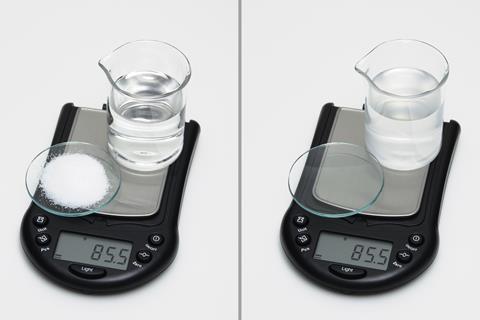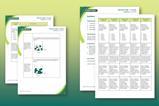Try these teacher-tested ideas to improve 11–14 learners’ understanding of this fundamental law

Russian polymath Mikhail Lomonosov first proposed the law of conservation of mass in the mid-18th century and people widely accepted it from the 1780s due to the work of Antoine Lavoisier. As a concept in the curriculum, it hides in plain sight. To teachers it may seem obvious, but students often find it difficult to connect real-world observations with the key ideas and struggle to express coherent answers.
Acknowledge the positive impact of explicit teaching
Conservation of mass is a foundational concept that underpins a number of more advanced topics, such as balancing equations and stoichiometry calculations. It fits perfectly at 11–14 where there is time to explore conservation of mass properly and address misconceptions.
1. Teach conservation of mass explicitly
Experts take the law of conservation of mass for granted but do acknowledge the positive impact of explicit teaching. Define the law for students and show its application in many ways. Outline precisely that there is mass that we cannot, necessarily, measure. For example, if we burn magnesium in air or oxygen the mass will seem to increase but students might not be able to confidently articulate why. Clearly explain that we don’t tend to measure the mass of gases when they react and so, while the mass may appear to increase, the law is obeyed overall.
Experts take the law of conservation of mass for granted but do acknowledge the positive impact of explicit teaching. Define the law for students and show its application in many ways. Outline precisely that there is mass that we cannot, necessarily, measure. For example, if we burn magnesium in air or oxygen the mass will seem to increase but students might not be able to confidently articulate why. Clearly explain that we don’t tend to measure the mass of gases when they react and so, while the mass may appear to increase, the law is obeyed overall. Watch the ’Conservation of mass practical video’ and download the supporting resources for more tips (rsc.li/3WwXPrj).
Demonstrate conservation of mass using example calculations too. For instance, in the formation of sodium chloride a teacher used 1.5 g of sodium. The sodium chloride produced had a mass of 2.54 g. What mass of chlorine did they react to form this amount of sodium chloride?
2. Tell stories
With nods to Jainism, philosophy and the classical world, the history of the law of conservation of mass is eclectic, allowing you to use the relative freedom of the 11–14 stage for cross-curricular activities. Engage students with contexts and stories to introduce ideas they might never uncover themselves. For example, Jainism is one of the world’s oldest religions and is non-creationist, with its teachings and texts stating that the amount of matter in the universe is permanent.
Lavoisier was just one of the scientists who popularised the law, developing a test to check if retailers had bulked up tobacco with wet ash. This made him unpopular with people who adulterated the tobacco for higher profits and lower tax payments and, ultimately, led to him losing his head in the French Revolution.
3. Explore practically
Simple experiments can provide an excellent catalyst for students to think deeply about core concepts. Use straightforward examples of chemical and physical changes to focus learners on connecting the macroscopic observations with underlying theory and to get them to think hard about the concepts. For example, ask students to predict what happens to the mass of a candle when it burns, then get them to measure the mass of a candle, light it and measure it again after it has burned for a length of time. I teach this each year with 12 and 13 year-old learners and they mostly reply that the mass will stay the same as the wax is just melting.
4. Observe real life
Explore everyday processes through the lens of conservation of mass. Most students know that fizzy drinks go flat. Put an open can or cup of fizzy drink on a balance then record measurements and observations each minute to produce interesting results. Students should predict that the mass goes down as the dissolved carbon dioxide leaves the drink, but often the mass stays the same or even rises. The cold surface of the container causes water in the surrounding air to condense.
Or investigate the mass of sugar in a full sugar drink compared to a sugar-free version or water, while reinforcing ideas about conservation of mass. Link to other topics, such as solutes, solvents and solutions with the everyday example of seawater.
Or use the ‘Fizzy drinks’ resources (rsc.li/4bZEdQR) to investigate the mass of sugar in a full sugar drink compared to a sugar-free version or water, while reinforcing ideas about conservation of mass. Link to other topics, such as solutes, solvents and solutions with the everyday example of seawater.
While it may be tempting to skip this topic, I believe it is one of the most important to explore at 11–14. And the examples above will help you create great lessons.
Kristy Turner














1 Reader's comment